Silicon Motion SM2256 SSD Controller Preview: TLC for Everyone
by Kristian Vättö on June 17, 2015 8:15 AM EST- Posted in
- Storage
- SSDs
- TLC
- Silicon Motion
- SM2256
AnandTech Storage Bench - The Destroyer
The Destroyer has been an essential part of our SSD test suite for nearly two years now. It was crafted to provide a benchmark for very IO intensive workloads, which is where you most often notice the difference between drives. It's not necessarily the most relevant test to an average user, but for anyone with a heavier IO workload The Destroyer should do a good job at characterizing performance. For full details of this test, please refer to this article.
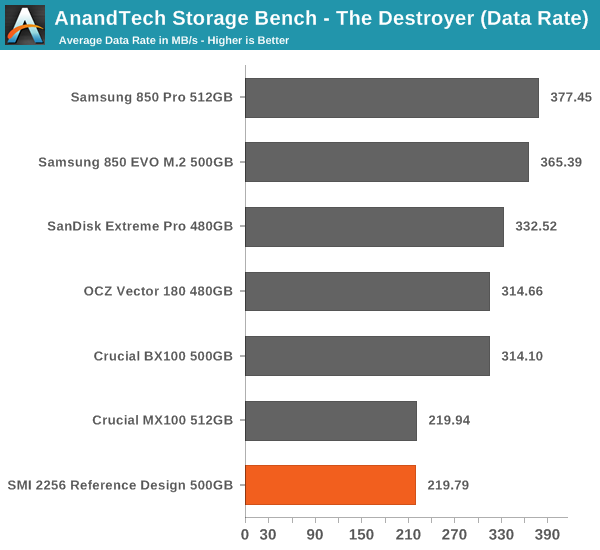
Under a very intensive IO workload, the SMI 2256 is a mediocre performer. Average data rate is high, which suggests good performance at large IO sizes, but the average latency is considerably higher than what MLC drives and the 850 EVO have to offer. Then again, TLC is slower than MLC and 3D TLC, and that's a fact that no controller can get around. Ultimately TLC drives, at least at first, will be more aimed towards typical client workloads anyway, which aren't really illustrated by The Destroyer.
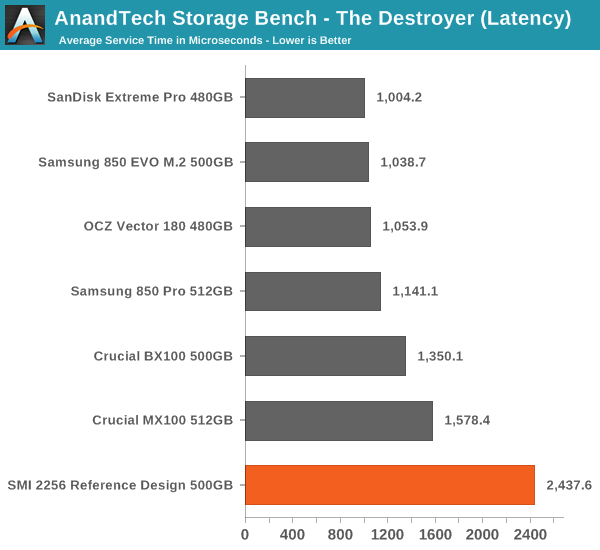
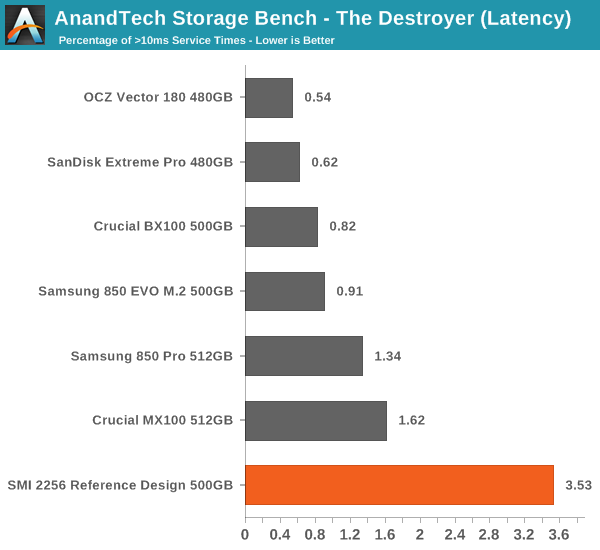
The number of high latency IOs is substantially higher than in the SM2246EN, but at 3.5% it's not alarming especially because the share of >100ms IOs is very moderate and not any worse than MLC drives.
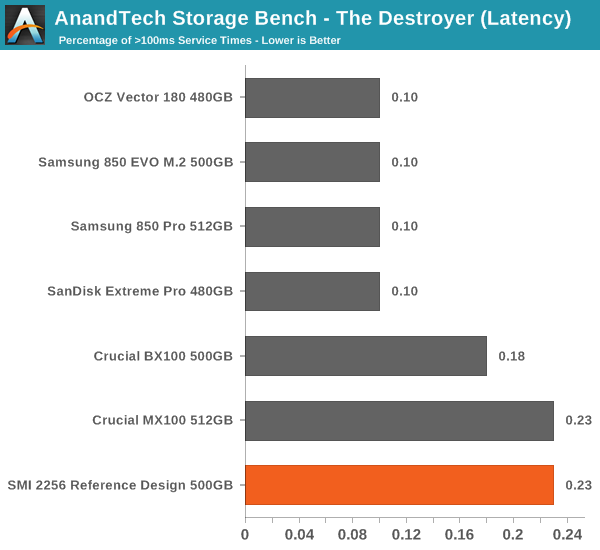
One of the inherent issues with TLC that nobody is talking about is increased power consumption, which our testing proves. TLC requires a higher number of program pulses to program the correct voltage, resulting in longer total program time as well as increased power draw. In addition, SLC caching means that all data essentially gets written twice, which obviously adds power draw despite SLC programming being much more power efficient.
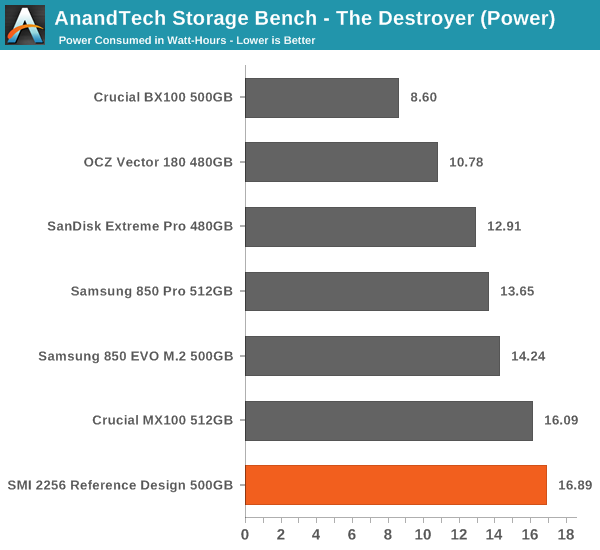










34 Comments
View All Comments
Shadow7037932 - Wednesday, June 17, 2015 - link
The benchmarks seems very lacklustre and similar to much older controllers/SSDs. I know it's still probably not optimized, but unless SSDs using this can REALLY get the price down, I don't see why people won't just go with the older SSDs like. Heck, even new SSDs like the 850 EVO can be had at a very competitive price.watzupken - Wednesday, June 17, 2015 - link
Having experimented with a couple of value SSDs running the older SM2246EN controller, I feel they are not too bad for the price. For most users, I don't think they will run into much performance issues with these drives and will still enjoy a better user experience than running a mechanical drive. If you are getting a new SSD running an older controller, its likely you won't find it cheaper cause its older.NeatOman - Wednesday, June 17, 2015 - link
Thats true, but paired with a i3 or anything AMD in which such a small margin when the Systems controller (like in AMD's AM3+'s 990 chipset) is the bottleneck or simply the processing power like with a i3 or lower.And i feel the 850 EVO 120gb at $85 is still much more expensive than a SSD you can pick up with almost the same day to day performance for $55. It's like comparing a desktop i5 to a desktop i7 IMO.
Taneli - Thursday, June 18, 2015 - link
Everything you write here is just complete garbage.leexgx - Saturday, June 20, 2015 - link
i agreeEthos Evoss - Wednesday, July 22, 2015 - link
the new Plextor SSD M6V has Silicon Motion SMI-2246Sejong - Wednesday, June 17, 2015 - link
TLC for everyone....this is not a welcome. :(SunLord - Wednesday, June 17, 2015 - link
TLC is nice for low end low use scenarios but that about it.Flunk - Wednesday, June 17, 2015 - link
This would have to be really cheap to be interesting.Hulk - Wednesday, June 17, 2015 - link
My thought exactly.